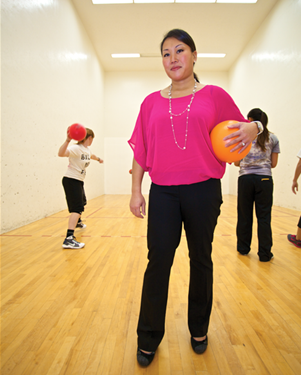Mental imagery may boost kids' confidence with physical tasks, says CSUEB scholar

Jenny O with school children
- March 26, 2013 5:00am
For Jenny O, an assistant professor in the Cal State East Bay Kinesiology Department, making kids more confident at physical tasks like throwing a ball or sinking a basket may prove critical to lifelong health.
O is working with a group led by Barbi Law, an assistant professor with Ontario’s Nipissing University, on a multi-project research program. The program examines how mental imagery can be used with children to make them more confident in their ability to be physically active. The group received a $65,354 grant from the Social Sciences and Humanities Research Council of Canada.
For the first phase of this research, which started in 2010, the team collected data on fourth graders to sixth graders in California and Canada, interviewing kids participating in physical education classes in elementary school.
Through interviews conducted at schools, the researchers recorded detailed descriptions of what the children imagine before participating in a P.E. activity.
One child who played basketball, for example, described himself blasting effortlessly through a wall of defenders to reach the hoop and score. A contrasting interview described a girl’s doubts that she could complete a dive: “(She) imagined herself running up and jumping on the board and saw herself go headfirst into the side of the pool — and the water turns red.”
Negative perceptions like this one may prevent a student from trying new skills — or prompt a child to quit working at a skill altogether. “Kids have vivid imaginations,” O says. “If they have negative images of physical activity, it will deter them from being active.”
O says the group’s results indicate that despite using mental imagery extensively in sport, children are not using mental imagery in P.E. to help them learn and perform various skills and strategies.
In the project’s second phase, researchers plan to determine whether kids who are taught mental imagery techniques to help with learning and performance in P.E. classes experience higher levels of confidence and satisfaction in these classes. This phase, conducted in Canada, concluded in December.
“We want to be able to teach kids how to use (mental imagery) to their advantage, to increase their enjoyment of physical activity and to help them believe that they can do more,” O says, noting that that team has submitted another grant application to extend its research program.
Read more in Cal State East Bay magazine on how CSUEB scholars are studying pediatric and adolescent mental and physical health.
KL